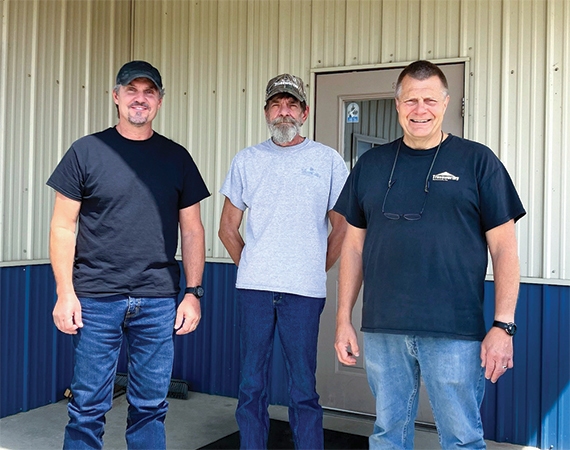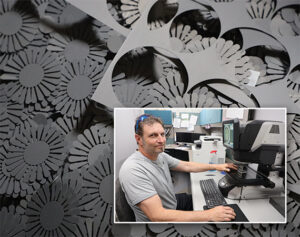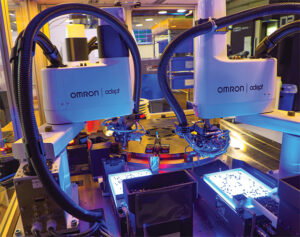The housing market had been booming for more than a decade when Craig Anderson decided to start a truss manufacturing business in Pine River. Unfortunately, the timing was less than ideal. By the time the company’s first truss came off the line in April 2006, the housing bubble was already threatening to burst.
Anderson entered the truss business after several years’ experience in the building trade and a brief stint teaching math and science in Brainerd. He had worked in a truss plant in Pillager, doing everything from sales to design to quality control and shop work — and loved it.
When an opportunity came along to manage a truss plant in Becker, Anderson passed it up. He didn’t want to relocate and he was not interested in management; but when people he’d worked with suggested he start a truss company of his own, he decided to explore the options.
He connected with Cass County Economic Development, put a business plan together, formed a corporation in 2005, and started looking for a building site. His advisor suggested checking out the town’s industrial park.
Anderson’s reaction: “Pine River has an industrial park?” He’d lived in Pine River his whole life.
“It was basically a cornfield and some woods,” he recalls. The City obtained a grant for the infrastructure — roads, water, electrical, gas. They cleared the area and Anderson and his wife Brenda bought a lot and some equipment with a revolving loan from the City and two loans from Pine River State Bank. The company had two other loans, too.
“It was very creative,” Anderson recalls. “Then a bunch of us got together — some of them investors.” They built the shop themselves and set up the equipment for the first business in Pine River’s industrial park.
Anderson’s son Eric came up with the name “Trussworthy,” and the company started producing trusses in 2006 with a crew of 12.
On paper, the gross sales numbers didn’t appear too bad for a new company almost doubling in sales between 2006 and 2007. Then things leveled off and dropped somewhat by 2009, with the full effect of the housing industry’s implosion.
The company failed to make a profit in the first four years, Anderson says. “We never had the benefit of any really good years leading up to the bubble bursting. We were pinching pennies every way we could. The lenders were getting very nervous — and rightfully so.”
This led to what Anderson describes as “some pretty interesting meetings at our local bank,” followed by a connection with the Small Business Development Center in Brainerd and a mentorship program.
They set a break-even point, formed a plan, and presented it to the bank. The bank accepted their proposal.
Four of the owners who worked in the company held off on getting paid or took smaller paychecks. “My wife and I took the biggest, longest hit,” Anderson says. “We went for three months without a paycheck and then made it up over the next year and a half or so.”
They followed their plan closely, and by the end of 2009 it was starting to pay off. In 2010, Trussworthy made a decent profit; gross sales numbers from 2006 had more than doubled. They doubled again by 2015. Continuous growth hit a peak in 2021. The following year, inflated lumber prices made costs rise, but, Anderson says, “We were so busy it was almost unmanageable.” Lead time on orders jumped from 6-8 weeks to 16 weeks.
In the past three years, Trussworthy has worked with Enterprise Minnesota’s business development consultant Bill Martinson and business growth consultants Abbey Hellickson, Ally Johnston, and Eric Blaha for continuous improvement in leadership and production flow.
Today Trussworthy has 48 employees — some of them seasonal, as the busiest time is from May to October. The plant has grown from 15,000 square feet to 28,000 with another 7,000 square feet for cold storage. Recently, Anderson and his wife purchased another lot in Pine River’s industrial park for future growth.
Equipment has advanced from manual saws to fully automated CNC saws and jigging equipment, laser guides, and a top-of-the-line press table. The time needed to set up a truss has dropped from 30 minutes to about 30 seconds.
Anderson often hires new employees without prior experience who have had to learn on the job, but today, he says, “We have experienced crews, and we’re putting out more product.”
Some employees, like plant manager Earle Daniels, have been with Trussworthy for almost 20 years. Sales manager Dan Golden is transitioning into the chief managerial role as Anderson maintains the title of president.
The man who loves building trusses but hadn’t wanted to be a manager found strong business partners, advisors, mentors, and lenders. Now he’s phasing into fewer on-site hours and is happy to hand off the managerial reins.
Anderson says the 2024 season is manageable and strong. Going forward, the company is focusing on production and efficiency.
“We have a really good core operation,” he says, “and it’s paying off. We’re seeing things this summer that are a spin off from a year or two ago, and they’re finally coming together.”
Return to the Fall 2024 issue of Enterprise Minnesota® magazine.


